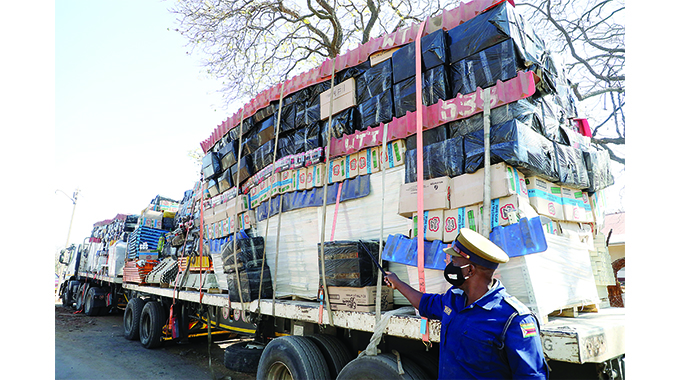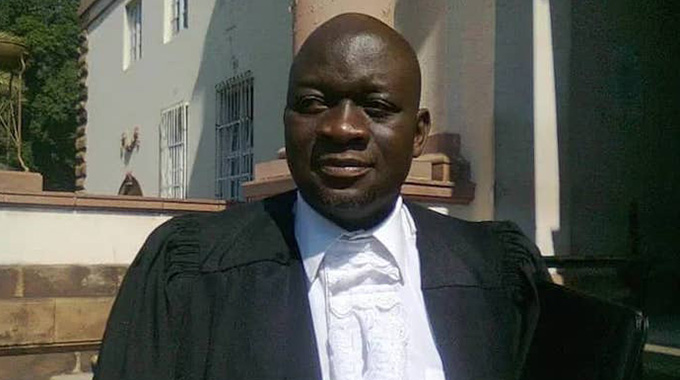Dhlodhlo Ruins: An unpolished gem in mid Zim!

Bongani Ndlovu, Chronicle Reporter
It is like a window giving one a glimpse into history, a gem that needs to be polished for its glory and beauty to be fully appreciated.
It is a 400-year-old record of human existence that is an anthropologist’s dream.
Sadly, most people including Zimbabweans, know nothing about the scenic “blast from the past” beyond a banner in Shangani along the Bulawayo-Gweru Road bearing the legend “Dhlodhlo Ruins.”
Similar to Great Zimbabwe and Khami Ruins, Dhlodhlo Ruins are the remains of an ancient city dating back to the 1600s.
It is nestled about 135 kilometres from Bulawayo towards Gweru, in Shangani. Getting there is fairly easy, you travel from Bulawayo and as you approach Shangani township, you will see the banner directing you to turn right onto a dust road.
A 10-kilometre bumpy ride along the road- probably the greatest deterrent for some visitors- will take you to another sign written Dhlodhlo Ruins and directing you to turn right again. Some deep gullies call for cautious driving. After about 20kms or so, there is another sign on the left written Dhlodhlo Ruins. This place is administered by the National Museums and National Monuments of Zimbabwe.
With a bit of advertising and road rehabilitation, tourists could flock to the place in droves.
After some metres, there is a small gate.
Upon entering it, on your left, you will see some familiar ruins and this is the main building of the ruins. These are familiar because if you have visited Khami Ruins or Great Zimbabwe, it is similar in architecture and design.
After we parked the car, we called out to whoever that was supposed to be there but there was no answer. We went to the mini museum just at the bottom of the mountain and we found it locked.
There was no one to help us on a guided tour. So, we decided to be our own tour guides. It seemed that the place has been undergoing some sprucing up as there are pathways that had been slashed through the tall dry grass.
Since there were no guides to take us through the place, we had to look for information through the glass of the information centre which had a plaque inside which read:
“The construction of Danangombe Ruins (Dhlodhlo) is attributed to a Torwa Dynasty which was subdued by the Rozvi in the 17th century.
The Torwa capital at Khami was violently overrun in the early 17th century and the rulers built a new capital at Danangombe. The Rozvi rulers who took over from the Torwa lived at Danangombe and nearby Zimbabwe’s Naletale and Zinjanja from the 1680s until the 1830s when they were overrun by Nguni ethnic groups during the Mfecane. Today the people who are related to the Rozvi are scattered throughout the country.”
The information centre was opened by the late nationalist Dr Dumiso Dabengwa when he was Minister of Home Affairs on September 25, 1998. Underneath this plaque is a miniature depiction of the city that was constructed by Zimbabwe’s ancestors over 300 years ago. It’s only your imagination that can fill in the gaps as you think about how they lived in this ancient city.

From the information centre, we took a walk around the site to see what it has in store. To the right of the information centre there is a path, down and following it down, you are greeted by more remnants of the ancient city. It looks like a plateau surrounded by the bricks, perhaps it was a granary or somebody’s house.
As you are watching, to your left there is a path that leads you up a hill, and when you follow it, the track will lead you to the highest point of the ruins. Pity there are no signs to explain where you will be and all you have to bank on is your imagination.
Perhaps this was the king’s palace or the residence of the person in power. This is because it is a vantage point and one can see all around and perhaps a long time ago, this was a good point to see when an enemy was approaching, or even monitor citizens. There is a mud and pole hut that seems to have been burnt by a veld fire that went through the place as the poles are charred.
Apart from this, the view from this point is wonderful, as you look into the distance over the thick vegetation that engulfs the area as far as the eye can see.
Going down from this point, leads one to another vantage point, which is at the top of the face of the ruins, and down below is a flat rock.
Again, without an explanation from the absent guide, one could only imagine that the king would be up there watching his subjects dancing and celebrating during a ceremony.

The rugged, picturesque view is yearning for the lens of a camera to make it into a post-card or social media favourite.
According to some research online, the main building is made up of two large platforms, the western one covering 900 square metres, with a retaining wall rising in places over 6 metres. The eastern platform covers over 2,800 metres, but is not more than 3 metres high.
When I got down there, it got me thinking that this could be turned into a campsite for tourists and at the base they could hold bonfires with the back drop being the escarpment, that has a remnant of a civilisation, that was sophisticated and intriguing.
This place could be ideal for an outing with friends as there are two braai areas that we saw just 50 metres away from the information centre. Ablution facilities are nearby and not secluded and are easily accessible.

The most well-known ruins in Zimbabwe are Khami and Great Zimbabwe, but there are many similar ruins around the country.
Each tells the story of a culture of a people, an indelible imprint of an existence that can be unravelled and add to the knowledge about humanity that lines shelves in the national archives.
Some of the ruins around the country include, in Mashonaland East Tsindi Ruins next to Marondera and Mtoko Ruins, Mashonaland Central Masembura, Garaubikirwe and Matanda Achiwawa.
In Matabeleland North there are Shangano Ruins, Halfway Ruins, Mtoa Ruins and Bumbusi Ruins all found around Hwange and in Matabeleland South there is Khami (shared with Bulawayo), Kingezi Ruins and Maphela Ruins. In the Midlands there is Nsalansala Ruins, Bhila Ruins, Nalatale Ruins, Danangombe (Dhlodhlo Ruins) and Ntabazikamambo Ruins.
In Manicaland Chipadze Ruins or Harleigh Farm Ruins, Ziwa Ruins which were the centre for agricultural terracing and in Masvingo there is Great Zimbabwe, Majiri Ruins and Musimbira Ruins. — @bonganinkunzi









Comments